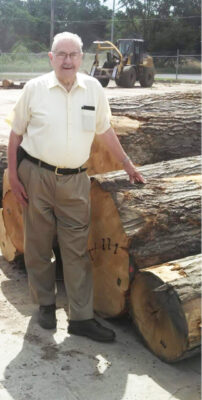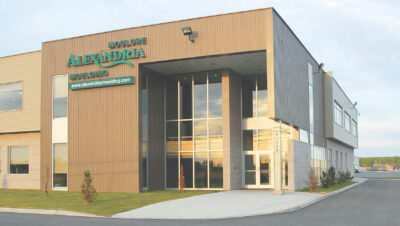The first two weeks of summer kicked off with a heatwave in Eastern Ontario and parts of the province of Quebec, reaching into the high 40 degrees Celsius during this time. The extreme heat and dry conditions, with the possibility of forest fires and poor air quality due to smoke were also challenges businesses had to face over the summer.
As we near the end of summer, contacts note that business has been down somewhat compared to last year at this time. Sales of finished Hardwood products have waned somewhat. The trend to painted finished goods has impacted the demand for natural wood finishes throughout the Hardwood industry. Competition from other floor covering products has also affected the Hard wood flooring sector.
Contacts note that sales of various species such as Soft Maple and White Oak are performing better than other species, as are various grades and thicknesses. Demand is low for Aspen, Beech, Hickory and Bass wood lower grades. Contacts also noted that pallet cant and lumber supplies were enough to satisfy the market’s needs.
Ash supplies are ample to meet demand, with secondary manufacturers and wholesalers purchasing on a regular basis absorbing No. 2A and Better supplies. Demand from domestic and international markets were noted as decent, particularly for the No.1 Common and Better grades.
Aspen demand is seen as rather slow, and lower lumber production in certain areas decreased its availability, thus supply is in alignment with demand. Kiln-dried Aspen stock are ample relative to market needs.
Basswood markets are quiet, although demand for No. 1 Common and Better from cabinet, moulding and millwork, and shutters and blinds manufacturers are the main buyers of this specie. It was noted that kiln-dried business was also weak with most grades and thicknesses of inventory being high.
Birch supplies saw increased activity to ship quickly so as to avoid staining. Finding buyers was a challenge. Premium color for kiln-dried business was a favored item noted contacts, and as such prices edged up.
Over the spring and summer, sales of Hard Maple were slightly down for that time of year compared to earlier in the year reported some contacts. End users reported their inventories were more in line with their needs, and so moderated their purchases. Some note that sawmill production is not very high in certain areas, thus limiting green lumber supplies and prices are firm. Kiln-dried Hard Maple business is doing well especially for FAS and No. 1 Common. The same was noted for Soft Maple markets. Kiln-dried prices had been noted to have risen. Some comment green No.1 Common and Better production is insufficient to meet demand, and so prices are up.
Over the summer, the focus for sawmills was production of whitewoods to avoid stain damage in logs and lumber. Red Oak production was controlled, however, there was sufficient supply to satisfy demand. Contacts stated kiln-dried inventories were low for some grades. End users of White Oak are still looking to obtain more green No. 1 Common and Better, however. Kiln-dried inventories are not meeting the solid demand, thus prices are rising.
The Canadian Council of Forest Ministers (CCFM) announced the Canadian Wildland Fire Prevention and Mitigation Strategy. The severe wildland fire events in Canada are increasing in frequency, intensity and cost. The wildland fire risk to people, communities and infrastructure is anticipated to increase. The challenge presented by this risk impacts everyone, making it a whole of society issue requiring whole of society solutions.
Prevention and mitigation are crucial pillars in wildland fire risk reduction. Prevention decreases the chance a wildfire will occur, while mitigation reduces the impacts of wildland fires that cannot be prevented.
The Canadian Wildland Fire Prevention and Mitigation Strategy is a call to action to mobilize all of society in reducing wildland fire risk focused on inspiring collaboration and action to inform, empower and equip citizens, communities, businesses and the private sector to proactively reduce their risk from wildland fire. It provides a shared vision of wildland fire prevention and mitigation to reduce the negative impacts of wildland fire.
Prevention and mitigation work is already underway across the country. The Canadian Council of Forest Ministers will develop a collective implementation plan to help coordinate and monitor efforts and assess progress towards the goals and commitments. (Note: Québec contributes to the work of the CCFM according to its priorities and in accordance with its jurisdiction over forest management. As Québec is already involved in forest fire prevention and mitigation on its territory, it acts as a member-observer of the CCFM’s Forest Fire Management Working Group. In this sense, Québec is not bound by the targets, objectives and commitments of the Canadian Wildland Fire Prevention and Mitigation Strategy.)
“The health and resiliency of our forests has never been more important, and we know that as a country we must adapt to climate change and the growing threat of wildfire,” said Bruce Ralston, B.C. Minister of Forests and CCFM Chair. “The Canadian Wildland Fire Prevention Mitigation Strategy is a whole-of-society call to action that ensures our forests and communities are more resilient for future generations.”
The Honorable Jonathan Wilkinson, Canada’s Minister of Energy and Natural Resources said, “Today’s announcement marks a significant step forward in enhancing Canada’s resilience to wildland fires, which are becoming more frequent and intense, posing greater dangers. This strategy reaffirms our commitment to keeping communities safe by our recent investments across the country, for example, through the Wildfire Resilient Futures Initiative and the Fighting and Managing Wildfires in a Changing Climate Program. Prevention and mitigation are key to this effort, reducing the numbers of wildfires that start and the damage they can cause when they do. By working together, we can inform, empower and equip Canadians to reduce their risk from wildland fires, lessening the impacts and protecting our beautiful landscapes for future generations.”
The Honourable Graydon Smith, Ontario Minister of Natural Resources and Forestry, said “This strategy supports people and industry to be prepared, empowered and engaged in preventing and mitigating the negative effects of wildland fires to help keep our communities safe. I’m pleased Ontario had a leadership role in the development of the actions and commitments in the strategy, and we will continue to collaborate with our partners to support this important initiative.”
The CCFM was established in 1985 to provide a platform for federal, provincial and territorial governments to work together on common concerns relating to the forests. The CCFM provides leadership on national and international issues and sets direction for the stewardship and sustainable management of forests across Canada.







